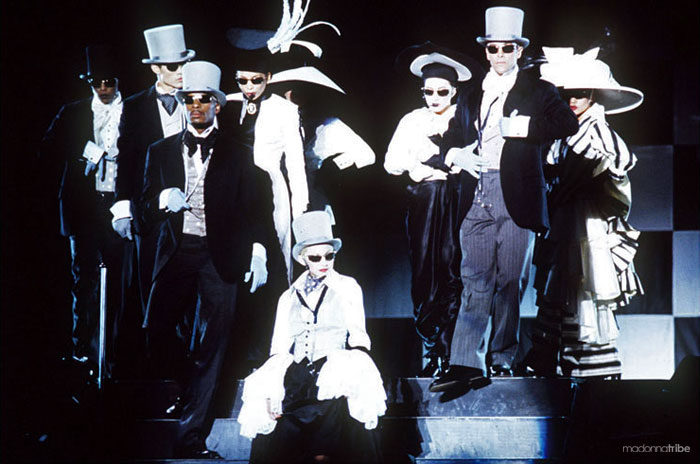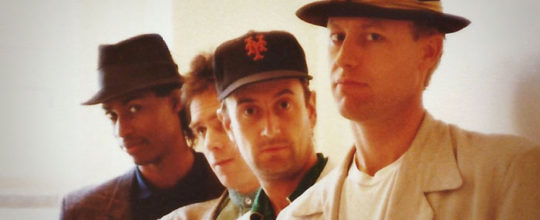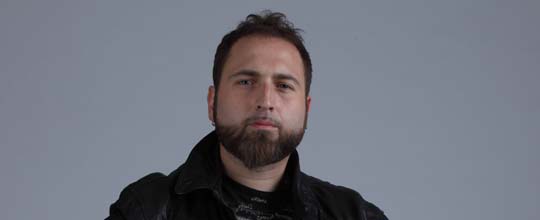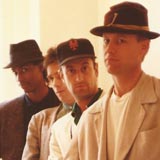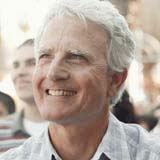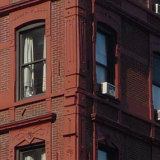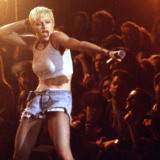MadonnaTribe meets Alex Magno
Back in 2005 MadonnaTribe had the chance to have a long chat with Alex Magno, the choreographer and dancer known worldwide for his Emmy Nominated work with Madonna.
In the recent years Alex has expanded his talents into directing music videos and short films; when he stopped by at MadonnaTribe he shared the memories of his adventurous life, his incredible career and his work with Madonna – from his early days in Brazil to the nights spent to create amazing dance routines we saw in The Girlie Show and the Drowned World Tour.
In this first half of the interview Alex brings you back to his roots, remembering how he happened to meet the Madonna and started working with her, and revealing some great anecdotes about how The Girlie Show was created.

MadonnaTribe: Hi Alex, welcome to MadonnaTribe.
Alex Magno: First of all thank you so much for inviting me, I feel very honoured to be able to contribute and share my life and my experience as a professional working in the field of dance and as a choreographer also working with Madonna, a great star that has revolutionised music industry.
MT: Let’s start talking of your amazing experience in the show business from the beginning…
AM: I started dance back in Brazil about over 20 years ago and I originally started in night clubs, myself along with my brother and two other boys. We had a group called “Old Jazz” and we used to perform in night clubs. We used to perform on the dancefloor and people would make a huge circle and watch us dance.
In one of those clubs we met a professional dancer called Sergio Vasconcelos, a classicaly trained and very well established dancer. At the time there was a huge taboo with male dancers. And we were skeptical when he approached us, we were teenagers and he was more mature. He came to us and said “you guys are such great dancers, you should go to dance class because you have the ability”. And we were like “ballet dance is not for guys”, we had that huge taboo ourselves as we prettty much went to night clubs to get girls.
MT: From the dancefloor to the studio, was that a big change?
AM: He convinced us to go to a specific dance studio called “Spacio Dance” which was in a suburb of Rio De Janeiro. We had an audition with a teacher by the name of Ana Melo. We showed her one of our routines. I was the choreographer of the group and at the time I was inspired by a popular tv show of the time called “Baila Con Migo”. It was very big. It even went to Europe.
That’s how I got the references of Jazz without having any academical training. So I used to watch and pick some steps here and there and throw it in the choreography and mixed with street dance and club dancing. We didnt know how to count and any music she put on we just danced. We looked at each other and said: go! She stopped us and said: If you want to ever dance, choreograph or do anything with music you need to know how to count the music. So that was my first lesson in understanding music and counting music.
MT: What happened next?
AM: Afterwords we all got a scholarship and we started studying ballet and modern dance. My brother Carlos Magno, who is also a choreographer today in Brazil, had to go under the army when he was 18 and as I was younger I had the luck to be able to study longer time there. After studying ballet and Modern Jazz at the same school and with the same teacher we gave the audition with, Ana Melo, who taught me the a-b-c of everything, they gave me a full scholarship ’cause they saw they were getting good results.
The years passed and I went to see my first professional show and it was the show that turned myself around and it made me go to the next level of dance. I saw this dancer performing, his name is Renato Vieira. He also was one of the choreographers and he was someone who really inspired me as a male dance, that made me wanted to be like him.
So I went to his studio, he owned a dance studio with another famous choreographer in brazil by the name of Carlota Portela, so I went to take his class and I was like a fish out of the water. I came from a humble town in Brazil by the name of vila kennedy and I went to the rich area of rio de janeiro to take this class and everybody knew I wasn’t from there. I didn’t dress with the most expensive clothes. I think I’ve might even be barefeet. It was very obvious I was poor but I had the talent and the passion and Renato was able to recognize that.
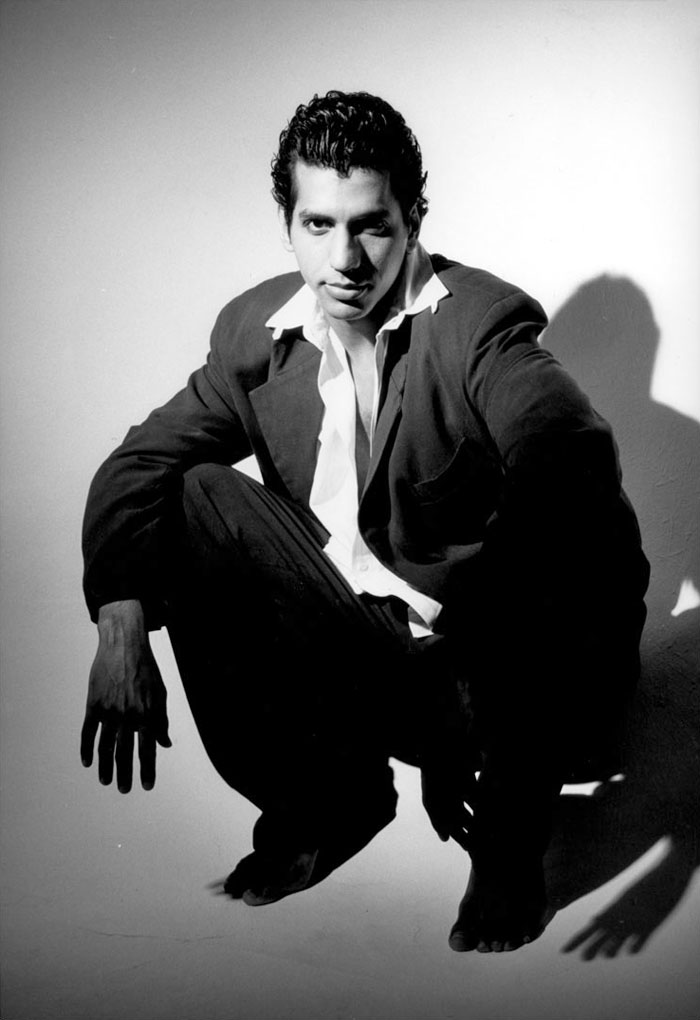
MT: Was that a big challenge for you?
AM: It was very hard for me, it was a very advanced class and it was very styleized. It was nothing I was used to do at the other school.
The other school was more squared, more academic, more clean and this was more like roundy movements, more ballet with Jazz. And Renato explained things very fast.
Renato did a choreography to Michael Jackson’s “Beat it”.
It was that time in the 80’s when Michael was very huge and every teenager wanted to dance like him. I felt very comfortable doing that, I did it pretty well and Renato saw the true potential that I had and at the end of the class he asked if I wanted the opportunity to have a scholarship there. I said sure, I was so inspired by his dance and choreography. He pretty much took me under his wing.
Renato is like a father to me and I like to acknowledge people in my life that have helped me because an artist is not anyone without those people in life.
Those people help you and they sort of create a path for you. Sometimes you messed up in the way but without them you wonder if you would be here today. So I’d like to acknowledge people like that.
Renato was that person for me and then after years taking classes I became a member of his dance company working as a chorus dancer. And then I moved on into a lead dancer, dancing besides him, which was a honour and such a huge accomplish to me, to be able to dance in the same stage with renato and also to at the same level as a lead dancer. After that the company toured Brazil and we did a lot of tv shows and during those times I was invited to attend an audition for a commercial that was going to use american dancers.
MT: That had to be a very different experience for you.
AM: That was my first experience working with american dancers in Brazil soil and the dancers and choregraphers were Dennon and Sayhber Rawles that were in charge of choreographies for the film “Staying Alive”.
They brought with them six american dancers to work with us. And among them there were Michelle Johnston, Michael Rooney and Nyla Fry which is the person that later on when I came to LA guided me and helped me and allowed me stay at her house in Santa Monica and was very supportive of my talent and my work. It was pretty big experience and I didn’t speak English at the time and so my communication with the Americans was very limited but I was able to connect with Nyla fry who gave me her contact in case I ever went to United States.
Later I started doing competitions as a choreographer. I did three competitions and I won first price on the last one that was sponsored by Paramount Pictures and the prize was a round trip to United States.
I had the ticked paid for and I had the hotel paid for however I still had to save money. That was my only chance of getting to United States but before that I had to go through the whole embassy thing. I got on a plane for the first time, I got in Los Angeles and a man was waiting with my name “Mr. Magno” and I was like “Is that me?”
I only knew the basic one on one english at the time. The was a limo waiting for me. I said to myself: Is this happening? Is this real? If my parents could see me now. And they took me at the Universal studio and I had no chance for the tip. I said: I have no “cambio” and the guy started laughing and said “it’s ok”. That was my welcoming to United States.
MT: Then you started doing auditions…
AM: Yes, after a while I started doing auditions, my first job as a dancer in a music video was with Hinton Battle, a choreographer and a huge star from Tap Dance Kid which won a Tony award.
He was the person that believed in me and said I’m, going to use you in my music video but prior to getting those dance professional jobs I had to survive so I got a job as a dish washer in a restaurant.
I didn’t speak the language so I was forced to do that. Then I was able to survive just as a dancer.
I started working with another choreographer, Kenny Ortega, I worked with Paula Abdul, all prior to Madonna. Before I go into Madonna there are two important things. Not everybody gets to Madonna so I have to explain how I got there. I made a dance company at that time, in order for me to grow as an artist, to expand my choreography and also to give a platform for dancers here in LA to sort of grow in this style of dancing.
I created the Personna Dance Theatre. Our first show was very well respected by the dance community. Then from those shows I created a strong union of dancers that supported me. People like Carrie Ann Inaba, which was one of the dancers for the Girlie Show, Carlton Wilborn and Luca Tommassini.
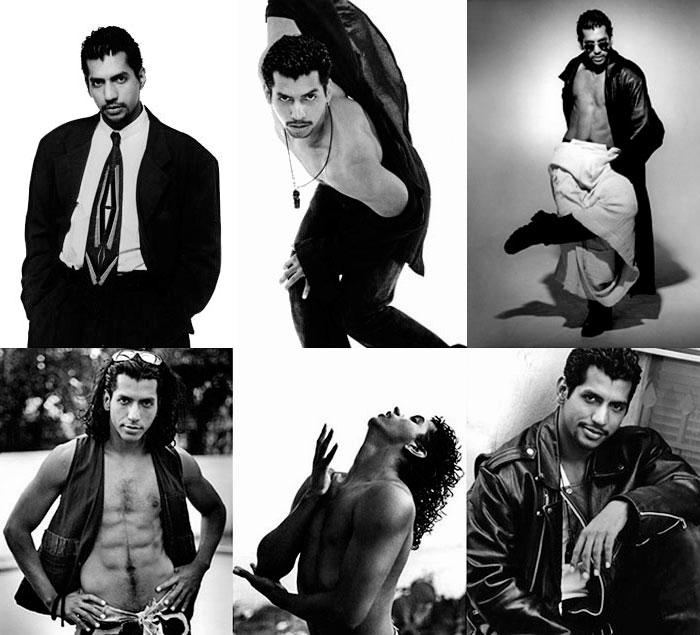
MT: Then came the Academy Awards number.
AM: Yes, then I was given the oppurtunity to co-choreograph “Under The Sea” from Disney’s “The Little Mermaid” with Paula Abdul for the 62nd Academy Awards ceremony.
We did this huge production number and I danced also. Luca Tommassini was in there, too. It was a huge production.
Everyone was in there as far as dancers. And it was the last time that the academy awards did something at that huge spectacle show. After that the level of the show sort of went down. After that I was invited to direct, conceive and choreograph as a guest for the variety show called in living color for the fly girls. Among the fly girls were Carrie Ann Inaba, the dancer from The Girlie Show, Jennifer Lopez, today’s huge star and others.
All of those girls prior to work with me they all took my class to get used to it and I’m very proud of the work I did for In living color. It’s one one of the best works on tv as far as dance is concerned.
MT: How did Madonna come into your life and career?
AM: I put a reel together and I had an agent representing me as a dancer. She would called me one day telling me that Madonna wanted to meet me. She saw my reel and was considering me and another choreographer to choreograph the “Girlie Tour“. And I panicked. I was like “that is not true”.
I mean you don’t get a call from Madonna like that.
Madonna wanted to meet me because she is all about vibe.
She might like your work but if she doesn’t vibe with you, forget it, you can be a genious but you are not going to work for her. She needs to connect with you.
If she likes you then you’re in and most likely if you pay attention to her direction and follow her direction carefully you will be there for a while because even getting there doesn’t mean that you will stay there.
At first I had this huge problem to do The Girlie Show because I was under a contract to do a show in Japan. And I had to fly the next day to Japan while they wanted me to fly to New York to meet Madonna, so they could make a decision. I told my agent I have contract, it’s my first time in Japan, a big company and I am a professional. So I said “I’m very flattered and I want to be part of it if they can wait”. Well Madonna is not gonna wait.
So I took this huge chance and said I can’t meet her. They went ahead and hired another choreographer and went ahead and had auditions. Prior to leave to Japan I went to Carrie Inaba who was also my assistant, I told her about Madonna and said here’s my most updated reel, I would like you to take this reel and to put Madonna’s music on top of the images for me while I’m gone cause I don’t have time.
She went ahead and put together a rough version of that and I also said to her: “Submit yourself as a dancer because I think she will like you”. Madonna did receive the package and she called Carrie Ann for the callbacks.
MT: What songs did you use on top of the reel you presented to her?
AM: We used “Erotica” or “Justify My Love“. I don’t recall exactly because they have the same vibe.
MT: We all know you got the job in the end…
AM: Two weeks passed, I came back to the United States and I immediately called the production company thanking them once again for considering me and if they needed any help to please call me.
Another two weeks later I got a call from the show’s director Christopher Ciccone asking me to meet him to possibly choreograph the tour.
I had a dinner with him in Beverly Hills and he told me the show’s concept and askes me a few questions about my artistry and personal stuff and finally asks me to come in the next day to teach “La Isla Bonita” to the cast of the “Girlie” tour.
He gave me a concept to see how I would follow their direction. We ended up not using that concept but never the less they wanted to see what I could do with it. It was kinda crazy.
It was based on a old MGM film. It was about a hotel bellboy, hotel helpers and a singer. Madonna was the singer and the dancers were the hotel helpers and they wanted me to a number like that. They told me the name of the film but I don’t remember it right now. But I’ve seen it and I put something together and I put down a whole concept based on just that.
That’s how I work, before I put ideas into steps I have to put things onto paper, to define who the character is and the motiviations. And it was great for me because that’s exactly the same way Madonna works and I didn’t know that.
Knowing the dancers I workshopped the night before with Luca Tomassini and Carrie Ann from the tour and some of my own dancers. Carrie Ann being Madonna. I workshopped for about two hours just to get an idea of what I had to teach.
The next day Madonna comes in at two o’clock after music rehearsals and she sits down and watches the number.
When the number is over she holds me by the shoulders and takes me aside away from everybody else and says:
Ok I like your work I just want to advise you if I don’t like something, if I say why are doing this steps, I want you to have a reason, I want to have a motivation, I am a performer that relies on a character, this is more a theatrical piece than just dance steps so every dance step must have a reason. So if I say I don’t like the step I don’t want you to take offence and I don’t want this to take you because this happened with other choreographers that I worked with. If you can do that then you’re cool.
And I said, “good, that’s exactly how I work”. So it was perfect that her visions of steps and of dancing sort of fitted the way I choreograph. We had to do a choreography a day because they were behind schedule, they brought me in to put the show back in its place. There was a lot of pressure.
The director specifically asked me that, he said: “Can you do these many numbers in this amount of time?”
I said: “I will do it, even if I will have no time to sleep”. So he said: “ok let’s take the chance”. So I got the job.
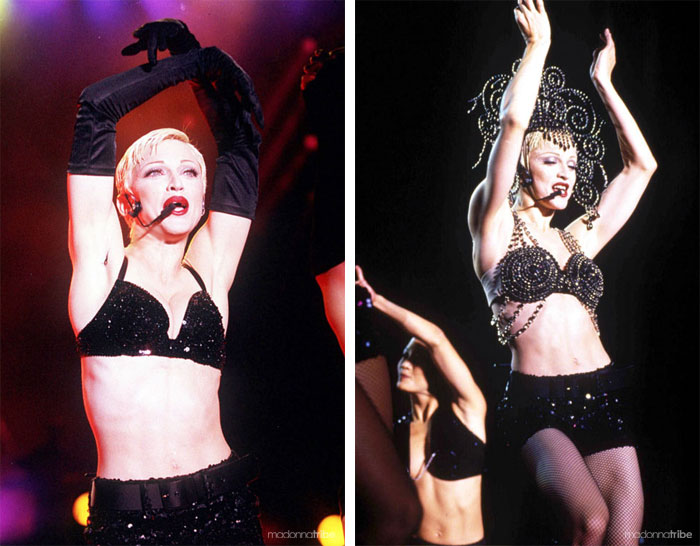
MT: How long did you rehearse for the show?
AM: We rehearsed for three months. There were two different shows for The Girlie Show tour. There was an arena show and a stadium show. We opened in London at Wembley. The staging of the show over there was the actual show we staged and choreo-graphed. It was a little be adpated because we couln’t fit everything. We kept changing things. Madonna would watch back and forth and say “this is missing”.
She gave notes to everybody. She did that also in the “Drowned World Tour“. It’s amazing.
MT: “Bye Bye Baby” on MTV was a nice preview from the tour.
AM: Yes the “Bye Bye Baby” one for MTV was actually a number from the tour. I actually wanted to do a different piece for the MTV show, thinking in terms of dancing and dinamycs I wanted to do “Justify My Love“, because it was a huge production number, with all those beautiful costumes. I also had “The Beast Within” as another option but it was way too much for MTV at that time, it would have been too controversial.
So they decided to do “Bye Bye Baby” and keep it very mild. And also that song sort of represented the whole idea of the “Girlie Show“. The idea of starting a show with a master of ceremony saying “Ladies and Gentleman…”.
It was a great teaser for the tour. A perfect teaser for the actual tour.
MT: Did your career change while on the road?
AM: During the tour my career really changed. Suddenly people started saying “Who is this guy?” because I sort of came out of nowhere and Madonna has that ability to find raw talent. In my humble opinion she doesn’t really go for “who is the most famous right now”. She wants something different and unique.
A lot of choreographers today are oversaturated, they do the same work for every artist. That’s what happens and it’s nothing new. And Madonna is smart because in order for that not to happen she hires people who are fresh. People who have fresh ideas with a fresh mind.
They are going to bring something new and unique. Something made especially for Madonna as opposed to “let me recycle what I did”. I don’t mind recycling as long as you use that as a starting point of creation just to get things going and from there you come up with something new.
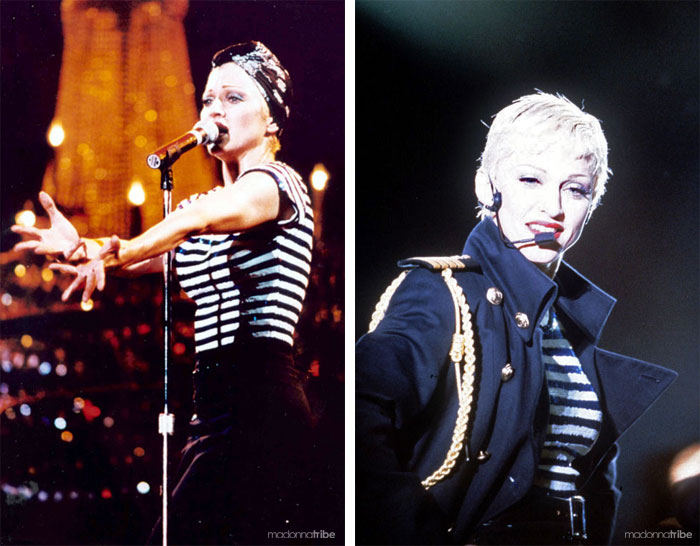
MT: How did you approach choreographing The Girlie Show knowing that people would sure compare it to the previous tour, the hugely famous Blond Ambition?
AM: It was a huge pressure but I also knew when I was brought in that the whole idea of the director and Madonna herself was to do something different than what they did on the previous tour. Blond Ambition was a huge production, the set was much more elaborated. They wanted to make something more simple relying more on the music, the musicians and the performers.
As far as performance it’s definitily one of the most raw, in comparison to the other tours. Because it didn’t rely on huge props, huge lighting, huge big production set such as the other tours. It was pretty simply in the sense that it relied on her performance, the choreography, the staging and the dancers. They made that show.
Never the less there was some brilliant choreography on the Blond Ambition Tour. Vince Paterson did an amazing work. He’s one of my favourite choreographers and directors and actually someone who I had the priviledge to work with as a dancer in two different occasions: a music video for Michael Jackson and a commercial.
I have a huge admiration for what he did back then with the Blond Ambition dancers. They were so unique, so different, Slam and the others became almost celebrities themselves.
MT: …And the Truth or Dare documentary helped..
AM: Yes that helped because we got to know the behind the scenes. Once again Madonna is the one who invented Reality TV.
MT: That’s true.
AM: Mtv has to bow down to her, she sort of like took MTV to a whole new generation because of that Truth or Dare documentary. It changed the face of TV in a way.
MT: The Girlie Show came during a very controversial moment in Madonna’s career, it was after the “Sex” book and the show was going to present highlights from her Erotica album. With the help of your choreographies the tour turned out to be strong and sensual at the same time. How did you work with Madonna to achieve such a result?
AM: Well “La isla Bonita” was the first piece I did for Madonna, as a flamenco piece which I wanted to do from the beginning but they didn’t want to so from my original audition routine I kept some of the movements such as the wave from there.
The wave with the hands that Luca Tommassini does before doing four pirouttes and then drop to the knees.
Then I added additional choreographies such as the hwole dance break when Madonna dances with the guy.
The second piece was “Beast Within”.
Madonna would come in and she would go: “Wait a minute, can you add a sword movement and we put it’s sound on it…
MT: And she was not even on stage on that number.
AM: Yeah, she is very involved. Everyday at the end of the rehearsal she would say: “Alex, tomorrow we will be working on this”.
She would take what she was working on with the musicians because the day was splits between the dancers and the musicians.
So by the end of the day, which was pretty late she would be bringing the tape, actually it was a DAT at the time, from the rehearsals with the musicians and she would play the next track that we wanted to work for the next day.
And she would go over the whole song, saying what the wanted, giving me ideas and sometimes even possible steps or possible staging, sort of improvising and sometimes even bringing dancers in.
With “Bye Bye Baby” she did exactly this. She took a chair and said “the girls sit on the lap” and playing with the whole thing.
Doing pretty much a director’s job, walking down the whole song, like what she sees in her head and what she would like to have happened. I would go home and and basically writing down all the directions she gave me.
The next day I would put that in a choreographic format in the right parts of the song. Break the song down into verses, chorus, bridge and put it in a structure for it. She would come in and say: “Perfect!”, because pretty much I followed her guide.
And when it wasn’t “perfect” she would say “Ok I don’t like it, change it” and I said “Ok, fine” and I would go and just change it.
Most of the time we would rehearse separately. I would rehearse with her alone and then alone with the dancers.
And then put them together.
We rehearsed back at the old MGM studios and we had two rooms, two huge film studios. I had one to rehearse with her alone and one to rehease with the dancers.
Aids was very preminent, very huge big thing back then, she was very into writing songs to support that. She was very supportive of the community. So it became the tour that became for many reasons. First of all because she was who she was back then.

MT: And what kind of direction did she give you for “Like A Virgin“? Who came up with that Marlene Dietrich idea?
AM: Well they told me to get the tape of a Marlene Dietrich film. I watched the movie and studied some of the movements and I kept that in mind and I was completely inspired by Marlene Dietrich. That was the direction Madonna gave to me and it was so much fun to do it because she is so good to give new life to old songs, and it matches with her theatrical ideas…
MT: Absolutely, her latest tour was very much about that.
AM: Right, she is one of the few artistist today that are able to do that in a very succesfull way. Giving a whole new world to the music and giving a whole new life to the songs. She gives songs another 10 years of new life each time giving them a timeless quality.
I love that on her and I love to be part of it and to be challenged to come up with steps that are also timeless. That’s the cool thing about working with madonna too. Especially when you do pieces like “The Beast Within” you are challenged to come up with steps that are timeless. You can play that today and it’s still a great fresh number. Some of the numbers because we used very hip movements they look a bit dated but some of the work like “Vogue” from that tour is timeless too.
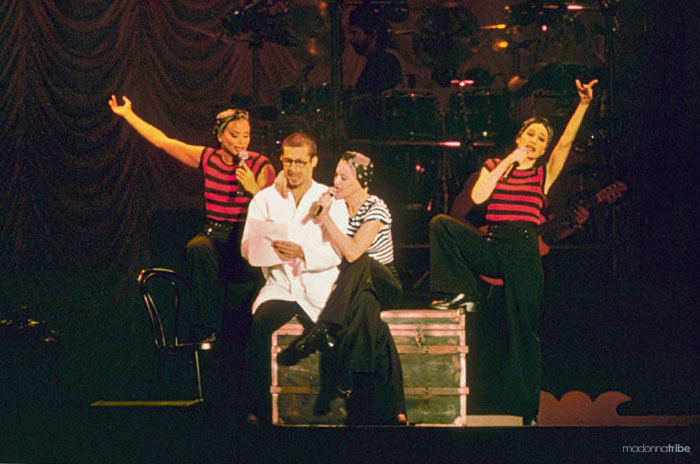
MT: Is there one number your particulary proud of in The Girlie Show?
AM: Of my work I’m proud of “The Beast Within”, I’m proud of “Justify My Love” and “La Isla Bonita“. I love all of them. As far as other choreographer’s work I love “Vogue“, the whole Indian idea is brilliant, the indu dance with the hat is amazing, a clever idea really well done.
MT: And which was the most hard number to work on?
AM: Even though I didn’t choreograph it, I had to clean the “Vogue” number. And I must say it was one of the most hard for the dancers because there was so much detail. “Beast Within” also. It was very phisical and it was very aggressive and harsh. And when you are in front of an audience you have to be 300% on.
Choreographing the opening number, the pole dancing with Carrie Ann Inaba, was also a great challenge. Carrie Ann took circus classes by a specialist and they teached her the tecnique and different steps.
A funny thing happened the day we did “Bye Bye Baby” at MTV. Everybody else went to party later. You know what we did?
MT: Let me think… You went to rehearse…
AM: Yes, we went to rehearse (Laughs).
Well just Madonna Carrie Ann and myself. Madonna wanted to work on “Erotica“, the opening with the whip. She wanted me to change a few things and clean the number up. She worked on that while Carrie Ann was there sitting and waiting.
Then she said “Ok now I’ll work with Carrie Ann on the pole” and helped her with the sequence, make her fit more the music.
Carrie Ann had put a bunch of sequences together but it wasn’t structured properly because she was pretty much doing on her own so Madonna said to me “Fix it, it has to be done today”. She is like that but it paid back because the opening number looked amazing.
MT: How was going back to your country as Madonna’s choregrapher with The Girlie Show on the very first time she performed in Brazil?
AM: There were 80.000 people in the stadium. It was a huge thing, I did some interviews with the newspapers there and it was a huge deal with Madonna.
It was the first time of Madonna there and the Brazilian went crazy.
We had to let them in earlier because they were screaming outsite the stadium and they were packed against each other and the firemen had to hold them down. They were singing even before the show started.
We were rehearsing for the show, Madonna was going over some of the songs with normal clothes and the fans came in and watched part of the rehearsals.
MT: There are actually some pics around of people watching rehearsals, it’s quite funny because she doesn’t usually let people enter the arenas before she’s done.
AM: She never does but in Brazil she was so taken by the atmospheare. She didn’t even have to try to make them party. It was the fans that were saying: “Madonna can you keep up with us? Cause we’re gonna party”.
MT: Must have been different from other audences..
AM: Yes, first of all the other audiences take it for granted, and for Brazil it was the first time they saw Madonna performing live.
In a way it was a big honour for the Brazilian people to be able to see a huge star like that. And they were thrilled to see her. She is very ispiring for young people.
A lot people grew up with her and her music such as myself.
Madonna, Prince and Michal Jackson were the three huge teen age idols people grew up with. And it took them many years of works to become the stars they are today. Nowadays you can become a star in two months and in a way that made the word “star” lose its power.
Everybody is a star today or they think they are. The true stars in my opinion are those that are timeless, that create ways and not follow ways. People like Madonna, Prince, Michael Jackson. Even if some of them didn’t do much in recent years.
Madonna has transcended into time over and over.
MT: She has always been there actually.
AM: Yes, always.
